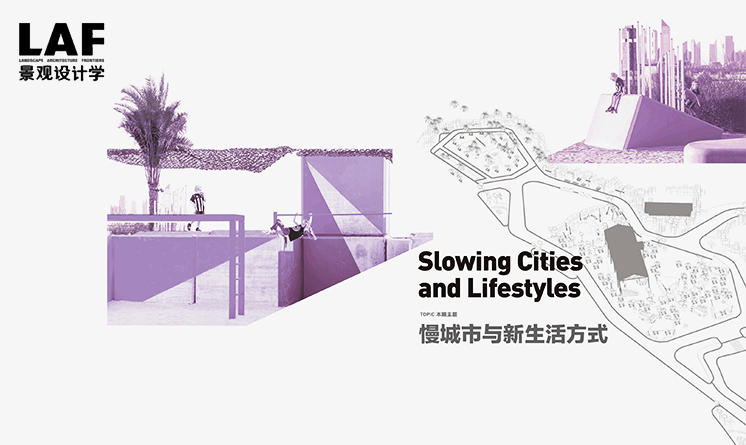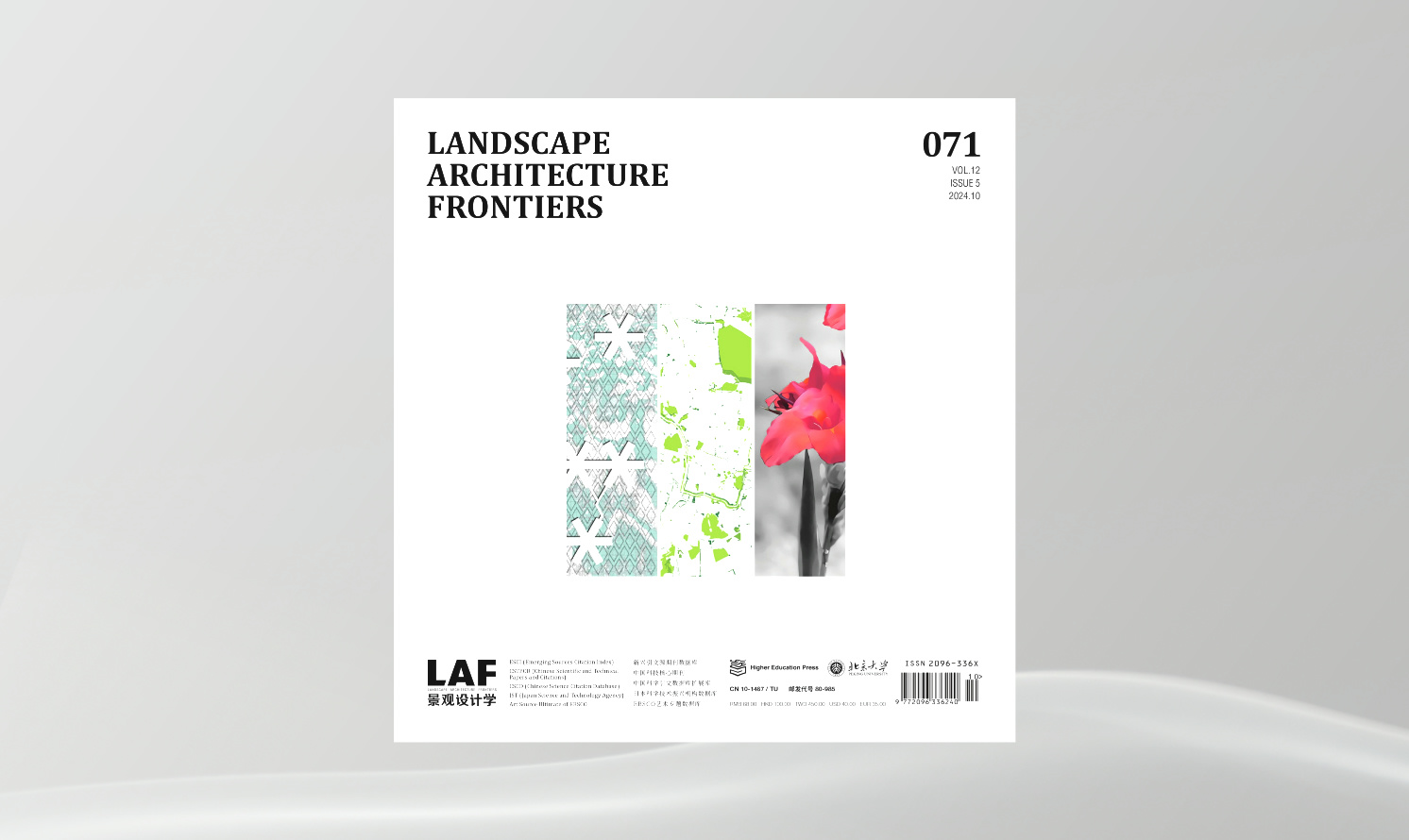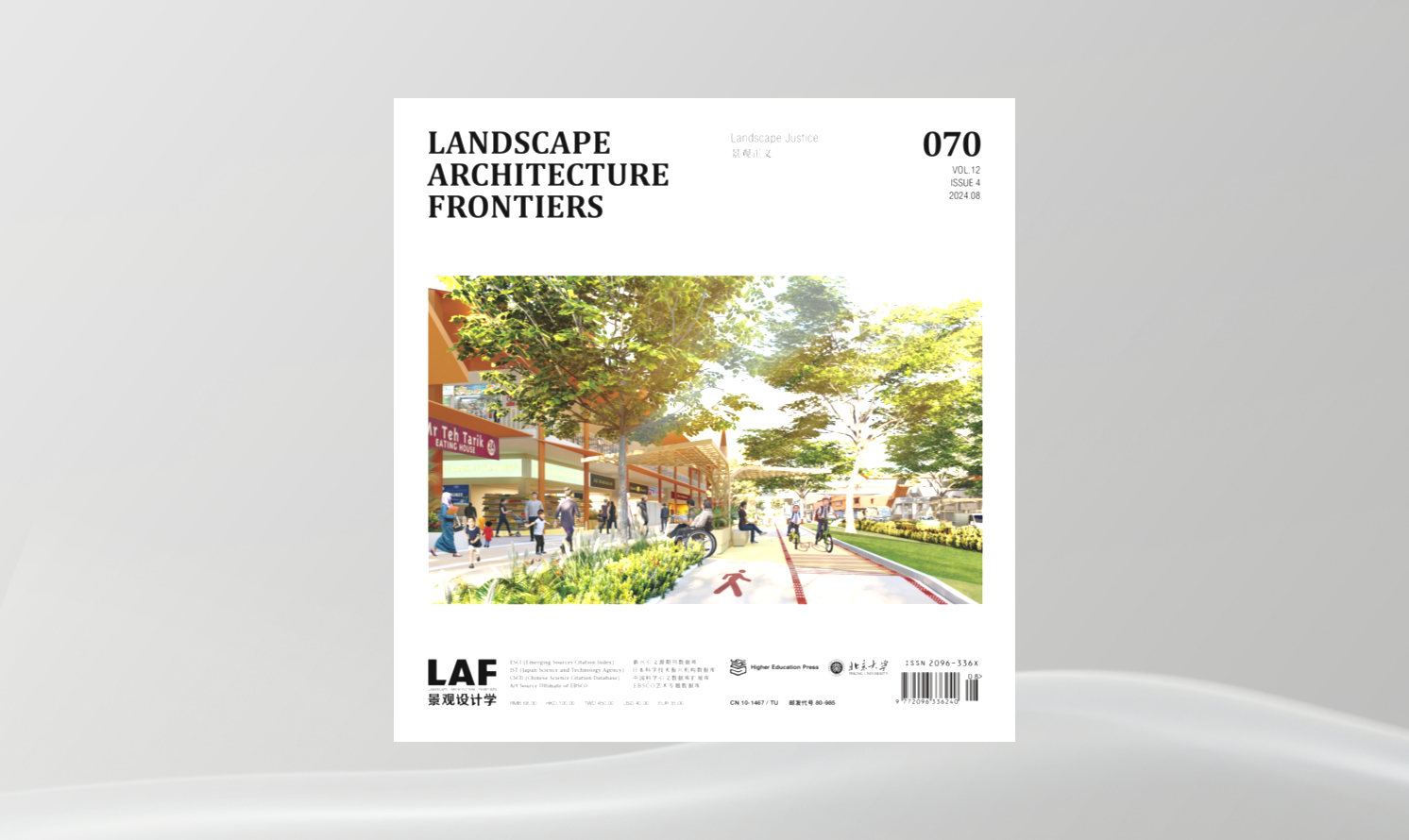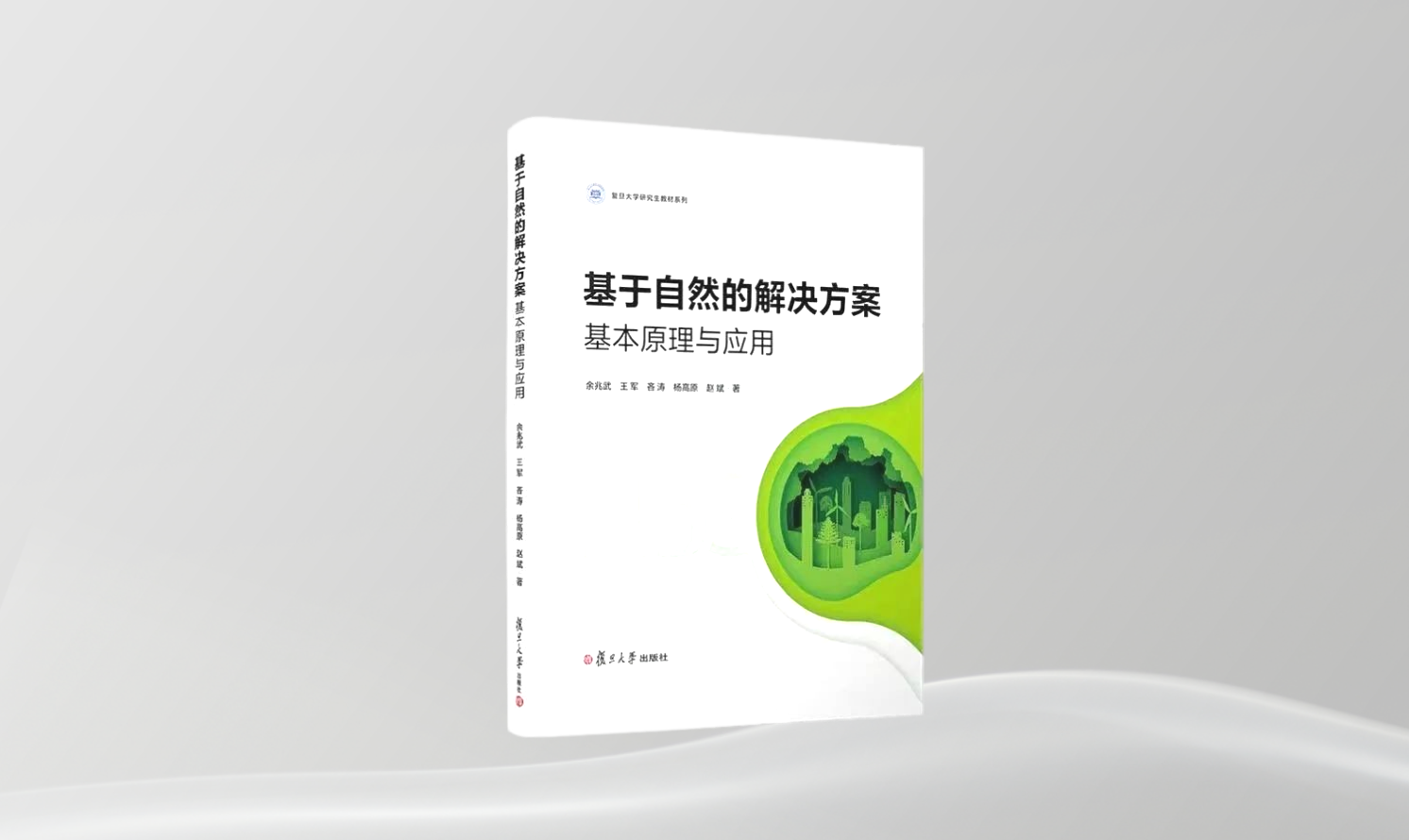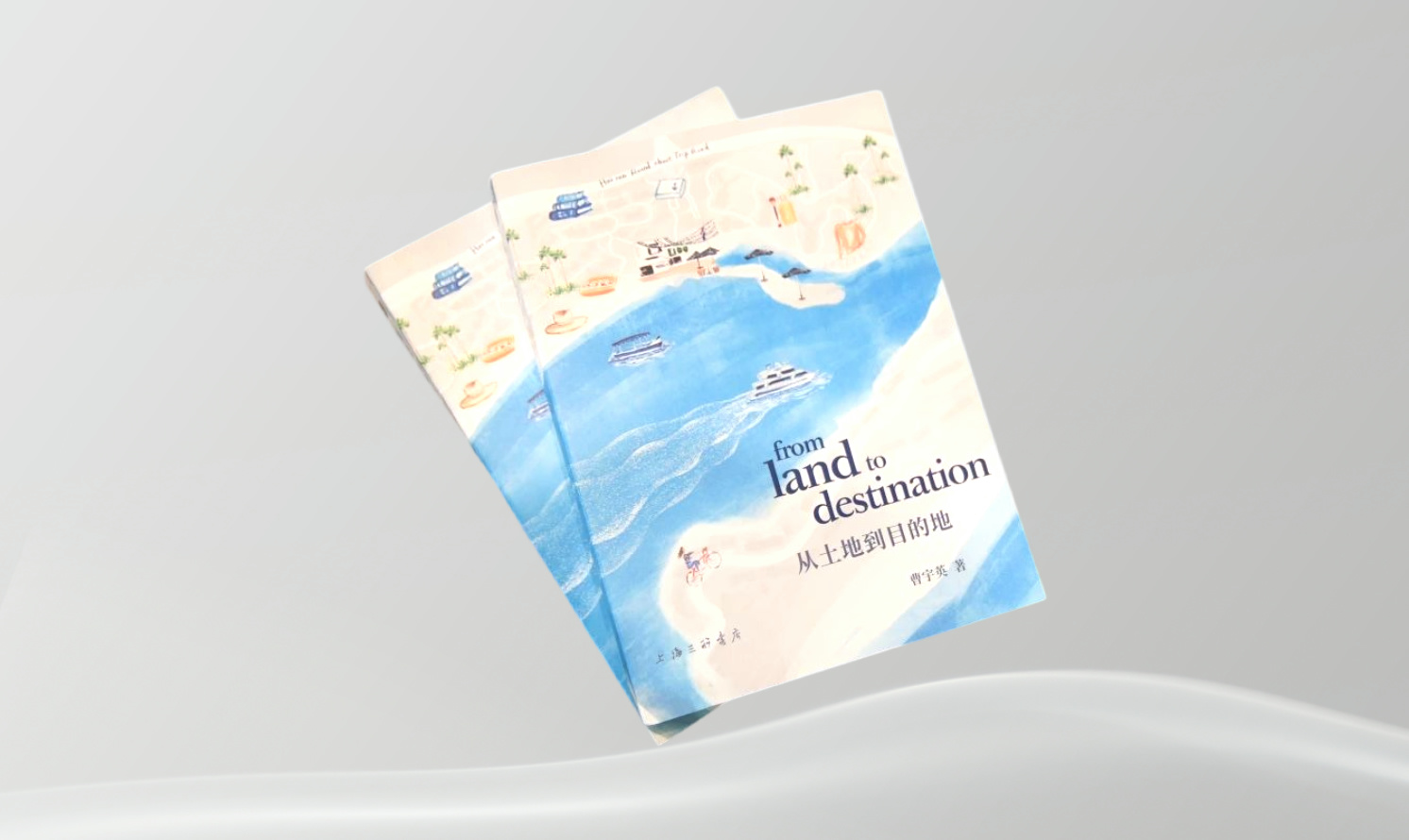城市新陳代謝視角下的以減慢城市資源流動(dòng)為目標(biāo)的城市設(shè)計(jì)決策支持框架
Decision-Supportive Framework for Urban Design Based on the Target of Slowing down Urban Resource Flows: From the Perspective of Urban Metabolism
作者:尹犖懿 YIN Luoyi
摘要
城市新陳代謝理論以解析城市資源流動(dòng)的視角��,為可持續(xù)城市設(shè)計(jì)提供了量化設(shè)計(jì)方法及策略的可能性���。本文以改善城市生活環(huán)境為出發(fā)點(diǎn),選取了4類與居民生活相關(guān)的城市資源(水��、能源���、有機(jī)廢物��、食物)作為評(píng)價(jià)對(duì)象�����,以其流動(dòng)速率作為評(píng)價(jià)指標(biāo)���,以設(shè)計(jì)情景模型作為核心建立設(shè)計(jì)決策支持框架��。整個(gè)框架包含4個(gè)基本部分���,包括城市現(xiàn)狀分析、設(shè)計(jì)情景設(shè)定�、設(shè)計(jì)選項(xiàng)清單,以及設(shè)計(jì)評(píng)價(jià)�����。該框架可實(shí)現(xiàn)方案的快速呈現(xiàn)并對(duì)其預(yù)期效果做出模擬和評(píng)價(jià)�,為設(shè)計(jì)實(shí)踐提供決策依據(jù)。通過將北京市國(guó)貿(mào)區(qū)域作為初步應(yīng)用案例���,框架為該地區(qū)提出一系列城市設(shè)計(jì)導(dǎo)則��,闡明了其對(duì)設(shè)計(jì)實(shí)踐的支持作用��。最后���,本文指出�����,框架的最終輸出結(jié)果并不意味著某一種設(shè)計(jì)方案或設(shè)計(jì)策略即是最優(yōu)選項(xiàng)�,而是幫助設(shè)計(jì)決策者建立對(duì)該設(shè)計(jì)方案的直觀認(rèn)識(shí)���,并更深刻地理解其將對(duì)城市環(huán)境造成何種影響�。
關(guān)鍵詞
城市設(shè)計(jì)�;城市新陳代謝;城市資源��;城市設(shè)計(jì)決策支持框架�����;設(shè)計(jì)情景���;城市空間工作平臺(tái)
ABSTRACT
The Urban Metabolism theory makes it possible to quantify design methods and strategies for sustainable urban design based on analysis of urban resource flows. Aiming at improving the urban environment, this paper takes four types of urban resources closely related to residents’ lives (i.e., water, energy, organic waste, and food) as evaluation objects and their flow rates as the evaluation indicators, and operates with design scenario models as the core to establish the decision-supportive framework for urban design, which consists of four basic parts: urban status analysis, design scenario setting, design alternatives, and design evaluation. This framework could quickly present design proposals and evaluate their expected performances, providing a basis for decision making in design practice. Then, China World Trade Center area in Beijing is taken as an example to interpret the practical value of the framework by providing guidelines for urban design practices of this area. Finally, the paper points out that instead of showing the optimal design strategy, the final output of the framework just provides decision makers an intuitive understanding of a specific design proposal and the impacts the design intervention would bring to the urban environment.
KEYWORDS
Urban Design; Urban Metabolism; Urban Resources; Decision-Supportive Framework for Urban Design; Design Scenario; Urban Space Platform
抵抗孤獨(dú)、隔離和不平等的恢復(fù)性空間規(guī)劃實(shí)踐
Restorative Spatial Planning Practice in Response to Isolation, Segregation, and Inequality
作者:徐磊青���,言語 XU Leiqing, YAN Yu
摘要
文章指出趨于同質(zhì)化的城市及社會(huì)原子化現(xiàn)狀可能導(dǎo)致相應(yīng)的孤獨(dú)��、隔離與不平等��,并批判性回顧了前者與后者內(nèi)在過程與發(fā)展階段的一致性���,以及個(gè)人心理狀況與城市問題的內(nèi)在一致性���。此外,文章回顧了社會(huì)恢復(fù)性城市主義和社會(huì)恢復(fù)性城市設(shè)計(jì)模型等諸多思潮��,在此基礎(chǔ)上總結(jié)得出社會(huì)恢復(fù)性城市設(shè)計(jì)模型��,提出減小組團(tuán)規(guī)模�����、場(chǎng)所營(yíng)造���、自然恢復(fù)���、構(gòu)建步行系統(tǒng)、打造交互型城市5種規(guī)劃策略���,將規(guī)劃視作賦權(quán)的技術(shù)與工具�,以實(shí)現(xiàn)人與人、人與空間��、人與自然�����、人與運(yùn)動(dòng)以及人與數(shù)據(jù)的連接���。文章基于這一基礎(chǔ)框架�,反思了上一輪激烈的城鎮(zhèn)化進(jìn)程中產(chǎn)生的諸多城市問題�����,梳理評(píng)析了中國(guó)城鎮(zhèn)化邁入“城市雙修”階段后亟需參照�����、學(xué)習(xí)的相關(guān)案例��,強(qiáng)調(diào)社會(huì)恢復(fù)的重要性不亞于物質(zhì)空間優(yōu)化與生態(tài)修復(fù)�����。
關(guān)鍵詞
社會(huì)恢復(fù)性城市主義�;社會(huì)恢復(fù)性城市設(shè)計(jì);城市更新�;孤獨(dú);隔離��;不平等��;空間規(guī)劃
Abstract
The article points out that the urban homogenization and social atomization status may lead to corresponding social problems including isolation, segregation, and inequality, and critically reviews their intrinsic consistency with urban development stages and the correlation between mental health and urban diseases. Based on the review of ideas such as Socially Restorative Urbanism and Socially Restorative Urban Design Model, the authors summarize a Socially Restorative Urban Design Model with five planning strategies — group size reduction, place-making, nature-based restoration, walkable system construction, and responsive city establishment — to realize human-human, human-space, human-nature, human-mobility, and human-data connections through taking planning as a tool of empowerment. In addition, the article reflects on the urban problems caused by the past urbanization process in China which pursued quick achievements and examines cases that could guide the new stage of Urban Remediation and Ecological Restoration, giving the same weight to social restoration as physical space improvement and ecological restoration.
Key words
Socially Restorative Urbanism; Socially Restorative Urban Design; Urban Regeneration; Isolation; Segregation; Inequality; Spatial Planning
工具與目標(biāo)的混淆——重新審視規(guī)劃設(shè)計(jì)行業(yè)的數(shù)據(jù)革命
Confusion of Goals — Rethinking the Implication of Data Analytics and Modelling for Urban Planning and Design Industry
作者:萬勵(lì)���,尹犖懿 WAN Li, YIN Luoyi
摘要
數(shù)據(jù)分析和建模技術(shù)在中國(guó)的城市規(guī)劃設(shè)計(jì)領(lǐng)域取得了快速發(fā)展�?;谶@一事實(shí),本文旨在填補(bǔ)利用數(shù)據(jù)制定有效政策成果與獲得技術(shù)產(chǎn)出之間的知識(shí)鴻溝�����,并將這種鴻溝置于更廣闊的智慧城市建設(shè)的背景下展開討論——雖然在該領(lǐng)域���,技術(shù)應(yīng)用并沒有帶來預(yù)期的政策成效�。我們需要從早期實(shí)踐中汲取經(jīng)驗(yàn)�����,以防在中國(guó)各大城市上演的規(guī)劃設(shè)計(jì)數(shù)據(jù)革命重蹈覆轍。本文提出的一大觀點(diǎn)是�����,為了充分發(fā)揮數(shù)據(jù)分析在城市規(guī)劃設(shè)計(jì)領(lǐng)域的潛力��,亟需引入更加完善的技術(shù)框架�,來重新審視規(guī)劃設(shè)計(jì)行業(yè)在中國(guó)的關(guān)鍵角色和核心競(jìng)爭(zhēng)力。從純技術(shù)論調(diào)和學(xué)科/專業(yè)路徑轉(zhuǎn)變?yōu)樯鐣?huì)-技術(shù)視角�。通過提出一系列建議,本文期望引發(fā)更多關(guān)于城市規(guī)劃設(shè)計(jì)中技術(shù)性行動(dòng)計(jì)劃的批判性討論��。
關(guān)鍵詞
大數(shù)據(jù)�����;數(shù)據(jù)分析技術(shù)�����;城市建模技術(shù)��;社會(huì)-技術(shù)�����;城市規(guī)劃���;城市設(shè)計(jì)
Abstract
Inspired by the fast take-up of data analytics and modelling in urban planning and design in Chinese cities, this paper aims to address a serious knowledge gap in terms of using data to deliver better policy outcomes rather than technical outputs. Such a knowledge gap is discussed in the wider context of smart city development where technology deployment failed to deliver the expected policy benefits. Lessons thus can be, and should be, learnt from early experiments to prevent the data revolution in planning and design in Chinese cities from repeating the same failure. One of the key arguments is that, in order to leverage the potential power of data and analytics for the urban planning and design industry, a wider theoretical framework is required for rethinking the core role as well as core competence of the planning profession in China. It entails a diversion from the purely technical discourse and the disciplinary / professional silos, towards a socio-technical perspective. A series of propositions are proposed to evoke more critical discussion about the digital agenda for urban planning and design.
Key words
Big Data; Data Analytics; Urban Modelling; Socio-Technical; Urban Planning; Urban Design
基于空間潛力和社會(huì)行為多源數(shù)據(jù)分析的城市綠道規(guī)劃研究——以北京市海淀區(qū)城市綠道選線規(guī)劃為例
Study of Urban Greenway Planning Based on Multi-Source Data Analysis of Spatial Potential and User Behaviors — The Greenway Route Planning pf Haidian District, Beijing
作者:陳希希���,李倞,譚立��,楊璐 CHEN Xixi, LI Liang, TAN Li, YANG Lu
摘要
城市綠道對(duì)于鼓勵(lì)城市慢行交通出行�、緩解城市交通擁堵具有重要意義。目前�����,中國(guó)綠道研究和規(guī)劃實(shí)踐主要集中在具有生態(tài)�、歷史、文化和休閑服務(wù)功能的�、位于郊區(qū)的區(qū)域綠道;而對(duì)于服務(wù)于城市慢行交通���、滿足市民日常通勤和休閑需求的城市綠道研究較少���。相比前者,城市綠道的選線和建設(shè)更加需要考慮建成區(qū)空間現(xiàn)狀條件和市民的實(shí)際使用需求。因此�����,本研究著重探討在大數(shù)據(jù)涌現(xiàn)的背景下���,運(yùn)用多源數(shù)據(jù)���,構(gòu)建基于GIS空間分析(綠道建設(shè)潛力空間評(píng)價(jià))和大數(shù)據(jù)社會(huì)行為分析(居民綠道日常使用需求評(píng)價(jià))的城市綠道選線規(guī)劃方法,并以北京市海淀區(qū)為例開展實(shí)證研究��。隨后�����,研究針對(duì)海淀區(qū)城市綠道建設(shè)涉及的道路�����、河道���、鐵路廊道和帶狀綠地等主要空間類型���,提出具體改造模式策略�����,將綠色空間網(wǎng)絡(luò)與慢行系統(tǒng)相結(jié)合��,以實(shí)現(xiàn)城市線性空間的功能優(yōu)化��。
關(guān)鍵詞
慢行交通;城市綠道�����;選線規(guī)劃�����;構(gòu)建模式��;大數(shù)據(jù)
Abstract
Urban greenways play a key role to a city’s non-automobile commuting and help alleviate traffic congestion. Currently, China’s greenway planning research and practice focuses mostly on suburban areas where greenways provide ecological, historical, cultural, and recreational services, while fewer studies explore urban greenways that serve citizens’ daily non-automobile commuting and recreational needs. Compared with suburban ones, urban greenways often face more spatial limits in the built-up areas and need to respond to more challenging demands. Supported by multi-source data and the rise of big data technologies, this research explores the methods of urban greenway route planning that are underpinned through GIS spatial analyses (potential evaluation on spatial construction conditions of greenways) and big-data-based user behavior analyses (of citizens’ daily use of greenways). Demonstrating the authentic planning case for Haidian District, Beijing, the research proposes a series of construction strategies to urban corridors of roads, waterways, and railways, respectively, which integrate green spaces with non-automobile system, in order to improve the services of linear spaces in cities.
Key words
Non-Automobile Traffic; Urban Greenway; Route Planning; Construction Strategies; Big Data
基于CiteSpace知識(shí)圖譜分析的城市內(nèi)澇問題研究述評(píng)
A Review of Research on Urban Waterlogging Based on CiteSpace Mapping Knowledge Domains
作者:冉玲于�,周燕 RAN Lingyu, ZHOU Yan
摘要
內(nèi)澇問題持續(xù)困擾城市發(fā)展,對(duì)中英文文獻(xiàn)中有關(guān)“城市內(nèi)澇”問題的研究進(jìn)行梳理與總結(jié)有助于系統(tǒng)剖析該問題的研究進(jìn)展�,從而探究緩解中國(guó)城市內(nèi)澇問題的科學(xué)途徑。本文以Web of Science核心合集數(shù)據(jù)庫和中國(guó)知網(wǎng)數(shù)據(jù)庫的文獻(xiàn)為研究對(duì)象�����,運(yùn)用科學(xué)計(jì)量分析工具CiteSpace的知識(shí)圖譜繪制功能,客觀地呈現(xiàn)了中英文文獻(xiàn)在“城市內(nèi)澇”問題上的學(xué)科結(jié)構(gòu)���、研究重點(diǎn)和研究熱點(diǎn)���。通過數(shù)據(jù)分析與解譯得出:“城市內(nèi)澇”問題研究整體保持較高熱度,涉及大部分學(xué)科并出現(xiàn)學(xué)科交叉現(xiàn)象���,且近年在城鄉(xiāng)規(guī)劃學(xué)�����、地理學(xué)���、風(fēng)景園林學(xué)等領(lǐng)域的研究熱度持續(xù)升高;所涉及的代表性學(xué)科在內(nèi)澇問題上的主要研究?jī)?nèi)容各有側(cè)重�;中英文文獻(xiàn)已從規(guī)劃理念、基礎(chǔ)設(shè)施、排水系統(tǒng)、空間調(diào)控�����、管理方法、微觀措施6個(gè)角度呈現(xiàn)多樣的調(diào)控途徑探索�����;當(dāng)前學(xué)界研究熱點(diǎn)主要集中在內(nèi)澇調(diào)控的理念與措施、水文學(xué)規(guī)律�、內(nèi)澇成因、風(fēng)險(xiǎn)評(píng)估與管理等方面��;目前研究偏向微觀尺度��,從宏���、中觀尺度探尋雨洪管控的理想空間格局與規(guī)劃實(shí)現(xiàn)途徑的研究相對(duì)欠缺,對(duì)于城市水文過程��、內(nèi)澇形成機(jī)制與雨洪調(diào)控途徑的空間類型之間的關(guān)聯(lián)性研究不足�����。最后�����,針對(duì)目前的研究局限提出:研究理論上應(yīng)深入探討各類內(nèi)澇調(diào)控途徑的產(chǎn)生背景�����、核心目的、應(yīng)用場(chǎng)景等�����,研究尺度上可對(duì)宏�、中觀層面空間規(guī)劃途徑的空缺進(jìn)行彌補(bǔ),研究廣度上應(yīng)注重與水文學(xué)進(jìn)行學(xué)科融貫探究���,為進(jìn)一步拓展中國(guó)城市內(nèi)澇調(diào)控途徑提供方向指引�����。
關(guān)鍵詞
城市內(nèi)澇��;研究述評(píng)�;研究熱點(diǎn)�����;知識(shí)圖譜��;CiteSpace
Abstract
Cities have suffered from long-time waterlogging problems. A review of English and Chinese literature on “urban waterlogging” can help analyze the research progress and further explore methods and approaches to alleviate such problems in Chinese cities. By examining the literature from the Web of Science Core Collection database and CNKI database with CiteSpace, a Mapping Knowledge Domains tool, this paper aims to scientifically review the disciplinary structure, major research interests, and research hotspots of the issues of urban waterlogging. Through data analyses, it concludes that: 1) urban waterlogging is a hot topic that has been studied in a great number of subjects, with interdisciplinary studies and a continuous growth in Urban and Rural Planning, Geography, Landscape Architecture, etc. in recent years; 2) the research on waterlogging in representative subjects varies; 3) English and Chinese literature explores stormwater management and control measures from the perspectives of planning concepts, infrastructure, drainage systems, spatial regulation, management methods, and micro-measures; 4) research hotspots cover the concepts and measures of waterlogging control, hydrological processes and patterns, causes of waterlogging, and risk assessment and management; 5) the existing research mainly focuses on micro scales, and there is an absence of studies on ideal spatial patterns and planning approaches at macro and medium scales, or on the correlation between urban hydrological processes and waterlogging formation mechanisms with spatial deployment of stormwater regulation approaches. Finally, according to existing research limitations, the paper proposes that: 1) future theoretical studies should explore the backgrounds, objectives, and application scenarios of various waterlogging control approaches; 2) studies are expected to explore spatial patterns and planning approaches at macro and medium scales; and 3) scholars should expand the territory of research by integrating with Hydrology.
Key words
Urban Waterlogging; Research Review; Research Hotspot; Mapping Knowledge Domains; CiteSpace
“慢城市”設(shè)計(jì)中的體驗(yàn)設(shè)計(jì)
Slowing down Fast Cities with Designed Experiences
作者:薩拉·威廉姆斯·戈德哈根 Sarah Williams GOLDHAGEN
摘要
為了應(yīng)對(duì)擁擠且快節(jié)奏的城市環(huán)境中顯著的同質(zhì)化問題��,設(shè)計(jì)師需要營(yíng)造多種體驗(yàn)來打造“慢城市”��。為此,設(shè)計(jì)師首先需要了解“慢城市體驗(yàn)”的特征和適用范圍�����,其次需要采用基于實(shí)證的方法以指導(dǎo)設(shè)計(jì)實(shí)踐���。本文根據(jù)現(xiàn)象學(xué)理論��,將慢城市體驗(yàn)分為“社交性”和“個(gè)體性”兩類���,并分別展開討論。前者源于一種能促進(jìn)人際交流的“情節(jié)”體驗(yàn)�����,而后者則與一種有助于恢復(fù)注意力的“存在模式”有關(guān)��。本文通過列舉若干種心理學(xué)和神經(jīng)認(rèn)知狀態(tài)���,為建筑師、景觀設(shè)計(jì)師和城市規(guī)劃專家提供了一個(gè)科學(xué)的現(xiàn)象學(xué)視角來定義有益于人類福祉的城市環(huán)境�����,并建議未來的相關(guān)研究重點(diǎn)關(guān)注不同表面、材質(zhì)���,以及圖案構(gòu)成和層次結(jié)構(gòu)復(fù)雜的作品給人帶來的體驗(yàn)��,并探索何種變化強(qiáng)度的建成環(huán)境要素能夠喚醒人們?nèi)諠u麻木的感官���。
關(guān)鍵詞
慢城市;建成環(huán)境�����;心理學(xué)�����;現(xiàn)象學(xué)���;神經(jīng)認(rèn)知��;社交性體驗(yàn)�����;個(gè)體性體驗(yàn)�;存在模式
Abstract
To challenge the stupefying homogeneities produced by dense and fast urban environments, designers should offer a range of experiences to create a “slowing city,” which first relies on the understanding of the character and range of “slow experiences,” then requires an empirically-driven approach to attain it. Phenomenologically, slow experiences can be social or solitary; both are discussed. The former comes from “event” experiences that facilitate meaningful interactions among people, while the latter promotes a shift into “being mode” which can help replenish human’s attention. Using findings in psychology and neurocognition, this article suggests that architects, landscape designers, and urbanists adopt a scientifically-grounded phenomenological approach to designing healthy urban environments where people can flourish. More attention is required to investigate people’s experience of surfaces and textures, and of compositions with varying levels of patterned complexity, as well as the changeability of design features and approaches to combat habituation.
Key words
Slowing City; Built Environment; Psychology; Phenomenology; Neurocognitive; Social Experience; Solitary Experience; Being Mode
以“慢設(shè)計(jì)”重塑高品質(zhì)城市環(huán)境——中國(guó)城市設(shè)計(jì)經(jīng)驗(yàn)與展望
High-Quality Urban Environment out of “Slow Design”: Review and Prospect of Urban Design Practices in China
作者:薛銘仁,張斗 Ming-Jen HSUEH, ZHANG Dou
摘要
持續(xù)推進(jìn)的城鎮(zhèn)化���,以及日新月異的應(yīng)用技術(shù)使得城市規(guī)劃師與設(shè)計(jì)師不斷思考如何在高速運(yùn)轉(zhuǎn)的城市中營(yíng)造舒適的居住體驗(yàn)���,“慢城市”的概念由此而生。本文首先基于Sasaki設(shè)計(jì)事務(wù)所多年的實(shí)踐經(jīng)驗(yàn)�,提出“善用當(dāng)?shù)刭Y源”這一“慢城市”核心設(shè)計(jì)理念,并將舊城更新類項(xiàng)目視作踐行相關(guān)方法論的主要試驗(yàn)場(chǎng)��。隨后�����,本文以若干典型城市更新項(xiàng)目為例���,系統(tǒng)闡述了這一方法體系在不同背景下的應(yīng)用��,進(jìn)一步將“使用者需求”視為一種設(shè)計(jì)城市物質(zhì)空間的重要依據(jù),介紹了如何在城市規(guī)劃與設(shè)計(jì)中權(quán)衡不同使用者的利益訴求��,以促成政府���、居民�、設(shè)計(jì)師等群體的合作,維持項(xiàng)目的長(zhǎng)期效益�����。最后�,本文對(duì)科技進(jìn)步、城市建設(shè)與生活品質(zhì)之間的關(guān)系進(jìn)行了辯證思考�����,并探討了規(guī)劃設(shè)計(jì)行業(yè)與新興科技相結(jié)合的發(fā)展方向�����。
關(guān)鍵詞
慢城市�����;城市設(shè)計(jì)���;城市更新���;歷史文脈;多方合作;公眾參與���;技術(shù)創(chuàng)新
Abstract
Driven by unprecedented urbanization and ever-changing applied technologies, urban planners and designers are exploring how to create comfortable living experience in fast-paced cities, thus rises the concept of “slowing city.” By reviewing years of design practices of Sasaki Associates, this article is focused on the core idea of “slowing city,” i.e., “making good use of local resources,” and its application into a number of urban regeneration practice. Further, by taking “user demands” as a critical reference, the article discusses how to coordinate the interests of a wide range of user groups and then facilitate cooperation among the government, citizens, and designers to ensure the long-term benefits of construction projects. Finally, critical thoughts are given to how the emerging technologies could contribute to urban construction and life quality, and the new opportunity that they may bring to the planning and design industry.
Key words
Slowing City; Urban Design; Urban Regeneration; Historical Context; Multilateral Cooperation; Public Engagement; Technological Innovation
將營(yíng)養(yǎng)流慢下來——?�?谑忻郎岷峪P翔公園生態(tài)設(shè)計(jì)
Slowing down Nutrient Flows — Ecological Design of the Fengxiang Park on the Meishe River in Haikou
作者:俞孔堅(jiān)��,俞文宇���,林國(guó)雄,張建喬��,拜真 YU Kongjian, YU Wenyu, LIN Guoxiong, ZHANG Jianqiao, BAI Zhen
摘要
海南省?����?谑惺且蛔匀伙L(fēng)光旖旎的南方濱海旅游城市�����,在近幾十年來的快速城鎮(zhèn)化進(jìn)程中���,人們忽視了自然河流作為城市水生態(tài)基礎(chǔ)設(shè)施的重要性��,導(dǎo)致城市的生態(tài)韌性和安全急劇下降。鳳翔公園作為美舍河上的重要生態(tài)節(jié)點(diǎn),集中暴露了美舍河流域的各種生態(tài)問題���。項(xiàng)目設(shè)計(jì)旨在通過設(shè)計(jì)生態(tài)學(xué)途徑修復(fù)場(chǎng)地的生態(tài)系統(tǒng)�,系統(tǒng)治理內(nèi)澇和水質(zhì)污染問題�,為周邊居民營(yíng)造高品質(zhì)濱水慢生活環(huán)境。
借助綠色海綿技術(shù)和加強(qiáng)型人工濕地系統(tǒng)的建立��,設(shè)計(jì)最終讓場(chǎng)地中的水流及營(yíng)養(yǎng)流慢了下來�,修復(fù)了動(dòng)植物棲息地,提升了生物多樣性���;多樣化慢行系統(tǒng)的引入鼓勵(lì)了市民及游客的綠色出行��,為城市打造了一個(gè)全新的旅游���、休憩、文化勝地���。更為重要的是��,在全球日益嚴(yán)峻的水污染和水資源短缺等問題下�����,項(xiàng)目所采用的設(shè)計(jì)方法在城市水質(zhì)治理�����、防洪以及創(chuàng)造社會(huì)文化服務(wù)空間等方面具有重要借鑒意義��。
關(guān)鍵詞
海綿城市���;人工濕地系統(tǒng)�;生態(tài)修復(fù)�����;慢生活���;設(shè)計(jì)生態(tài)學(xué)
Abstract
Haikou is a coastal tourist city in Hainan Province of South China with beautiful natural landscapes. During the rapid urbanization in the past decades, the role of natural rivers as city’s water ecological infrastructure has been long-time neglected, resulting in a sharp deterioration of urban ecological resilience and security. Fengxiang Park, sitting at the middle reaches of the Meishe River, is a key ecological node in the watershed, which however had suffered from severe ecological problems. In this demonstrative project, the site was envisioned as an urban park which mitigates urban flooding and water pollution and provides citizens a quality waterfront with pleasant, slow living environment through a substantial ecosystem improvement with means of Design Ecology.
Techniques of green sponge construction and the reinforced constructed wetland system deployed in the park have effectively slowed down the flow of water and nutrients, restored habitats for fauna and flora, and increased biodiversity; the introduction of a diversity of slow traffic system has brought vitality to the city by encouraging green traffic modes among citizens and tourists, creating a new tourism, recreational, and cultural destination for the city. More importantly, in view of increasingly severe issues such as water pollution and shortage around the globe, this project shows an obvious reference significance to other practices in urban water quality improvement, flooding control, and the creation of public spaces to provide social and cultural services.
Key words
Sponge City Construction; Constructed Wetland System; Ecological Restoration; Slow Life; Designed Ecology
山西省大同古長(zhǎng)城文化遺產(chǎn)廊道中的慢行設(shè)施體系規(guī)劃
Planning of Slow-Traveling Facility System for the Ancient Great Wall Cultural Heritage Corridor in Datong, Shanxi Province
作者:王宏達(dá)�,馮瀟 WANG Hongda, FENG Xiao
摘要
長(zhǎng)城是世界文化遺產(chǎn)�,也是人類文明的瑰寶。2017年���,山西省大同市政府提出了建設(shè)大同古長(zhǎng)城文化遺產(chǎn)廊道的構(gòu)想���?����;趶V泛調(diào)研與嚴(yán)謹(jǐn)分析,規(guī)劃團(tuán)隊(duì)構(gòu)建了一條長(zhǎng)258km���、總面積186km2的遺產(chǎn)廊道�,其中�����,慢行設(shè)施體系承載了主要的游覽�、休憩、科普功能�,整合了遺產(chǎn)沿線資源的建設(shè)、運(yùn)營(yíng)和管理�����,是極為重要的基礎(chǔ)設(shè)施�。本文探討了文化遺產(chǎn)廊道中慢行設(shè)施體系的構(gòu)建策略,提出適應(yīng)長(zhǎng)城遺產(chǎn)空間分布特征的高效低干擾設(shè)施整體結(jié)構(gòu)�����,綜合運(yùn)用最小累積阻力模型等多重科學(xué)手段對(duì)區(qū)域的開發(fā)條件與生態(tài)環(huán)境狀況進(jìn)行評(píng)價(jià)分析,并基于評(píng)價(jià)分析結(jié)果�,對(duì)慢行游道體系與節(jié)點(diǎn)體系進(jìn)行適應(yīng)性規(guī)劃與設(shè)計(jì),同時(shí)構(gòu)建相應(yīng)的低介入解說體系��,最后通過游客量測(cè)算對(duì)設(shè)施規(guī)模進(jìn)行控制��,以實(shí)現(xiàn)遺產(chǎn)保護(hù)與旅游開發(fā)的平衡���。
關(guān)鍵詞
文化遺產(chǎn)廊道���;遺產(chǎn)保護(hù);慢行設(shè)施體系���;開發(fā)適宜性評(píng)價(jià)���;低介入;明長(zhǎng)城
Abstract
The Great Wall is a world cultural heritage and a treasure of human civilization. In 2017, the Government of Datong, Shanxi Province proposed to build a cultural heritage corridor of the ancient Great Wall. Based on deep investigation and meticulous analyses, the planning team envisioned a heritage corridor with a length of 258 km, covering a total area of 186 km2, in which the slow-traveling facility system, as an important component that integrates the construction, operation, and management of related heritage sites, provides sightseeing, recreational, and educational services. This article discusses the strategies to develop the slow-traveling facility system in the cultural heritage corridor, which adopts a low-interference structure according to the spatial distribution of heritage sites along the Great Wall, and applies the minimum cumulative resistance model and other scientific methods to analyze development suitability and ecological environment conditions of the project site. Based on the evaluation results, the slow-traveling facility system and the service node system are adaptively planned and designed, combined with a low-intervention interpretation system. Finally, the scales of facilities are designed based on an estimation of tourist amount to control the impact of construction on heritage sites and natural environment. As such, the balance between heritage conservation and tourism development is achieved.
Key words
Cultural Heritage Corridor; Heritage Conservation; Slow-Traveling Facility System; Development Suitability Evaluation; Low Intervention; The Ming Great Wall
重新定義公園:迪拜“混凝土塊”公園
Reinventing the Public Park — The Block in Dubai
作者:鄧肯·丹利 Duncan DENLEY
摘要
耗時(shí)7個(gè)月建造的“混凝土塊”公園雖然剛剛落成�����,但已成為迪拜設(shè)計(jì)區(qū)內(nèi)一處廣受好評(píng)的濱水公園�。desert INK景觀設(shè)計(jì)事務(wù)所通過重新利用迪拜運(yùn)河修筑工程中遺留下的700余塊約30噸重的混凝土塊,創(chuàng)造了眾多兒童游樂空間�����、戶外運(yùn)動(dòng)區(qū),以及餐飲點(diǎn)��。其設(shè)計(jì)打破了一般公園建造的定式�,采用非常規(guī)設(shè)計(jì)手法,營(yíng)造了這處放眼中東地區(qū)乃至全世界都極具獨(dú)特性與創(chuàng)新性的景觀�����。這座不同尋常的公園為原本的設(shè)計(jì)產(chǎn)業(yè)聚集區(qū)帶來了更多兒童和家庭訪客��,多種不同的生活方式在這里碰撞交融�����,也使得整個(gè)社區(qū)日益繁榮�����。
關(guān)鍵詞
混凝土塊�����;回收���;城市公園��;非常規(guī)設(shè)計(jì)�����;迪拜設(shè)計(jì)區(qū)���;生活方式
Abstract
Recently completed, The Block was constructed over a seven-month period along the Dubai Water Canal in Dubai Design District, providing a much-celebrated public park for the people of Dubai. Through their re-purposing of seven hundred 30-ton concrete blocks left over from the canal construction, landscape architects, desert INK created countless play features for children, outdoor exercise areas, and food and beverage outlets. Breaking all public park stereotypes and incorporating an unconventional approach to design, The Block stands out as one of the most unique and innovative landscape designs in the Middle East, if not the world. With a clear brief to attract a diverse range of new visitors to d3, desert INK set out to create an extraordinary park which would attract children and families to this otherwise design-industry focused district so that different lifestyles could co-exist and the community could thrive.
Key words
Block; Recycle; Urban Park; Unconventional Design; Dubai Design District; Lifestyles
印度尼西亞慢時(shí)尚實(shí)驗(yàn)室:在發(fā)展中國(guó)家推廣慢時(shí)尚的緊迫性
A Slow Fashion Lab in Indonesia: Mapping Landscape of Urgencies in Developing Countries
作者:阿普麗娜·默萬蒂 Aprina MURWANTI
摘要
本文剖析了印度尼西亞參與全球慢時(shí)尚運(yùn)動(dòng)的緊迫性及所面臨的挑戰(zhàn)。雖然慢節(jié)奏是印度尼西亞傳統(tǒng)文化(特別是在紡織工藝生產(chǎn)和剪裁縫補(bǔ)方面)的重要組成部分�,但作為技術(shù)產(chǎn)物的“慢時(shí)尚”對(duì)印度尼西亞國(guó)民來說依然是一個(gè)全新的概念;其作為一種現(xiàn)代生活理念�,在印度尼西亞依然屬于新生事物。2017年��,歌德學(xué)院發(fā)起的IKAT/eCUT項(xiàng)目在印度尼西亞舉辦了慢時(shí)尚主題展覽�。在策展過程中,最大的挑戰(zhàn)在于如何呈現(xiàn)印度尼西亞的快時(shí)尚現(xiàn)狀���,以及探索當(dāng)?shù)卮嬖谀男┞龝r(shí)尚理念的實(shí)踐�。認(rèn)識(shí)到發(fā)展慢時(shí)尚的緊迫性�����,有助于更好地在當(dāng)?shù)貙⑦@一理念付諸實(shí)踐。和許多國(guó)家相比��,印度尼西亞的主流市場(chǎng)還未被西方快時(shí)尚產(chǎn)品所占據(jù)���,因此在該國(guó)推行慢時(shí)尚理念的方式也應(yīng)不同于以往��。在這里�,“慢時(shí)尚”一詞被賦予了更加豐富的內(nèi)涵——通過對(duì)其基本原則進(jìn)行擴(kuò)展�����,可以更好地契合印度尼西亞的國(guó)情和現(xiàn)狀�����。
關(guān)鍵詞
慢時(shí)尚�����;快時(shí)尚�;紡織工藝�����;發(fā)展中國(guó)家;印度尼西亞���;回收利用
Abstract
This article highlights the urgencies and challenges in interpreting slow fashion in Indonesia to join the global movement. The term “slow fashion” as technical production was never familiar in Indonesian society despite a slow process is an integrated part of Indonesia cultural heritage — especially in producing the textile craft practice and repairing clothing to the tailor. The term “slow fashion” as a modern lifestyle philosophy is totally a new thing in Indonesia. When this term was brought to develop exhibition by IKAT/eCUT Project, Goethe-Institut in 2017, the biggest challenge was to map the fast fashion landscape and to explore the practice of this philosophy in Indonesia. This list of urgencies will highlight the realistic way to adapt the concept of slow fashion in the country. Since western fast fashion products are not massively occupying major Indonesian market, the parameter of counter must be slightly shifted into a contextual one. The term slow fashion then should be interpreted in a broader way than what has been set in the West, including extending the principle pillars to fit with Indonesia situation and context.
Key words
Slow Fashion; Fast Fashion; Textile Craft; Developing Country; Indonesia; Upcycle
鄉(xiāng)村并非偏遠(yuǎn)之地——以Company Drinks飲料公司的實(shí)踐為例
The Rural Is not Remote— The Case of Company Drinks
作者:卡特琳·伯姆 Kathrin B?HM
摘要
本文重點(diǎn)關(guān)注尚不平衡的二元城鄉(xiāng)關(guān)系�,并以Company Drinks飲料公司的實(shí)踐為例�����,展現(xiàn)了一種不同于以往的城鄉(xiāng)關(guān)系—城市人口暫時(shí)性地向鄉(xiāng)村地區(qū)遷移�����。這種情況的出現(xiàn)與倫敦東區(qū)工薪家庭采摘蛇麻草的傳統(tǒng)息息相關(guān)�����。在這一案例中��,一座工薪階層社區(qū)逐漸發(fā)展了一種適合他們的鄉(xiāng)村實(shí)踐——每年定期前往鄉(xiāng)村參與勞作�����。Company Drinks飲料公司開創(chuàng)了一種新型企業(yè)模式�����,它基于人們對(duì)于“采摘蛇麻草”傳統(tǒng)的集體記憶,為倫敦東區(qū)居民帶來了一種契合當(dāng)代生產(chǎn)生活條件��、滿足人們的實(shí)際需求的周期性集體生產(chǎn)方式��。隨著各項(xiàng)活動(dòng)的成功開展�,“采摘”已從一項(xiàng)東區(qū)傳統(tǒng)轉(zhuǎn)變?yōu)橐环N在不同文化背景、不同地域的人群中都廣受歡迎的活動(dòng)���。本文作者認(rèn)為�,城鄉(xiāng)之間的聯(lián)系不能僅憑距離遠(yuǎn)近來界定�,鄉(xiāng)村不僅可以為城市社區(qū)提供傳統(tǒng)農(nóng)業(yè)知識(shí)及自然資源,也可供城市居民探索新生活方式�。
關(guān)鍵詞
城鄉(xiāng);鄉(xiāng)村實(shí)踐���;社區(qū);生產(chǎn)
Abstract
The article focuses on the undesirable binary between the rural and the urban and uses Company Drinks as an example of a reverse rural-urban relationship, where an inner city population migrates temporarily to the countryside, which is relevant to the hop-picking tradition (“hopping”) practiced by working-class families from London’s East End. In this case, a working-class community has developed its own rural practice, moving between rural and urban settings on a regular basis. Company Drinks is a new model cultural enterprise that uses the collective memory of hopping as a starting point to rethink and reintroduce an adaptive collective production cycle into East London everyday life. With various successful activities being held, going picking has been far from an East End tradition and become a universal activity recognized and appreciated across different cultures and landscapes. The author believes that rural-urban link cannot be controlled from a distance. Rural society offers knowledge and resource that can empower urban communities, and can test and provide conditions for alternatives to urban lifestyles.
Key words
Rural-Urban; Rural Practice; Community; Production
 京公海網(wǎng)安備 110108000058號(hào)
京公海網(wǎng)安備 110108000058號(hào)
